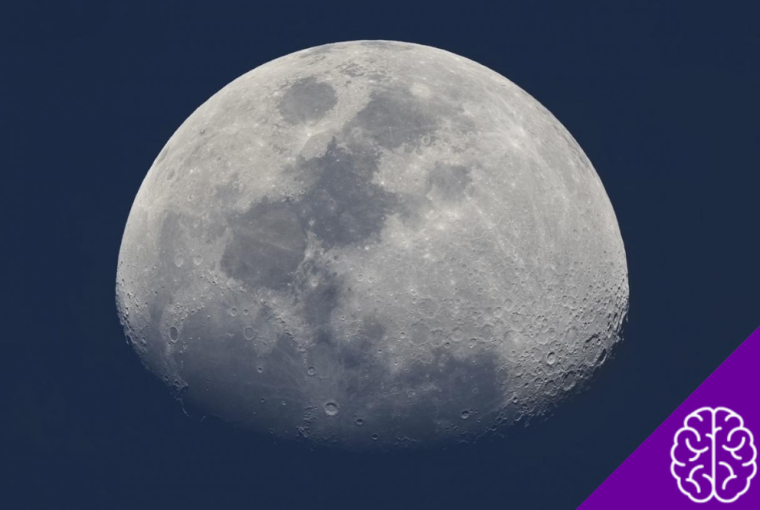The phrase “once in a blue moon” is often used to describe something incredibly rare or unusual. But how rare is an actual blue moon, and what does it mean beyond the metaphor?
If you’ve wondered about the science and significance behind this lunar phenomenon, you’re in for a treat. By the end of this post, you’ll learn what defines a blue moon, how often it happens, and whether the moon actually turns blue.
What Is a Blue Moon?
Despite its name, a blue moon has nothing to do with the moon physically changing color. The term actually refers to a rare occurrence in the lunar calendar. There are two common definitions of a blue moon:
Monthly Blue Moon
A blue moon occurs when there are two full moons in a single calendar month. Typically, months only have one full moon because the lunar cycle is about 29.5 days long. However, this alignment can happen approximately once every two to three years, depending on how the lunar cycle falls within the Gregorian calendar.
Seasonal Blue Moon
This lesser-known definition refers to the third full moon in a season that contains four full moons. Usually, each season—spring, summer, fall, and winter—has three full moons. But when a season has four full moons, the third one is called a “blue moon.” This definition is based on traditional agricultural calendars.
Both definitions occur rarely enough to justify their association with uncommon events, though they are not as astronomically rare as the metaphor might suggest.
How Rare Is a Blue Moon?
Blue moons are special because they’re irregular. Here’s a breakdown of how frequently they occur:
- Monthly Blue Moon: These happen about once every 2.5 to 3 years. The time between them isn’t perfectly consistent because the Gregorian calendar doesn’t align precisely with the 29.5-day lunar cycle.
- Seasonal Blue Moon: These occur approximately once every 2.7 years, making them slightly less common than monthly blue moons.
To put it simply, a blue moon of some type happens roughly every two to three years. The next time you hear “once in a blue moon,” you’ll know it’s rare—but not impossible.
Fun Fact
The rarest blue moon is when a seasonal blue moon and monthly blue moon happen in the same year. This phenomenon only occurs every 19 years due to the Metonic cycle, a period over which the lunar phases repeat on the same dates.
When Was the Last Blue Moon?
The last blue moon happened on August 22, 2021, and it was a seasonal blue moon. Meanwhile, the most recent monthly blue moon occurred on October 31, 2020, often referred to as the “Halloween Blue Moon,” which thrilled skywatchers.
Does the Moon Actually Turn Blue?
The short answer is no. A blue moon does not look blue to the naked eye under normal circumstances. However, certain atmospheric conditions can give the moon a bluish tint. For example, volcanic eruptions or large wildfires release fine particles into the atmosphere, scattering red light and allowing more blue light to reach our eyes. Events such as the eruption of Mount Krakatoa in 1883 reportedly caused the moon to appear blue for extended periods.
Why Do People Call It a Blue Moon?
The origin of the term “blue moon” is somewhat unclear, but one explanation dates back to folklore and linguistic evolution. The English phrase originally referred to absurd ideas, such as “the moon is made of cheese.” Over time, it came to describe rare occurrences.
A misinterpretation in the 1940s of the seasonal blue moon rule also contributed to popularizing the modern “two full moons in a month” definition. Since then, the term has captured the public imagination.
Why Are Blue Moons Significant?
For many, blue moons are an excuse to gaze up at the night sky and appreciate the wonders of astronomy. They also hold cultural and spiritual meaning in certain traditions:
- Cultural Significance: Some cultures view the blue moon as a time of heightened intuition, reflection, and opportunity. Folktales often ascribe magical properties to this rare event.
- Astronomical Interest: For skywatchers, a blue moon is a reminder of how the lunar calendar and human-made calendars don’t perfectly align, creating these moments of fascination.
Whether you’re into science or symbolism, the blue moon is a celestial event worth celebrating.
How Can You Spot the Next Blue Moon?
Want to find out when the next blue moon will dazzle the sky? Mark your calendar for August 30, 2023—a monthly blue moon. This will also be a supermoon, meaning it will appear slightly larger and brighter than usual because its orbit brings it closer to Earth.
Pro Tip:
- Keep an eye on local stargazing events or astronomy clubs—they often organize special viewings for occurrences like blue moons.
- A basic telescope or even binoculars can help you get a closer look at the moon’s details.
What About Other Rare Lunar Events?
Blue moons are just one type of fascinating lunar phenomenon. Other notable events include:
- Blood Moons: These occur during lunar eclipses when the Earth’s shadow gives the moon a reddish hue.
- Supermoons: These happen when the moon is both full and at its closest point to Earth in its orbit, making it appear larger.
- Harvest Moons: The full moon closest to the autumn equinox, notable for its bright light that historically helped farmers harvest crops.
Each of these events offers a unique reason to look to the skies and expand your appreciation of the cosmos.
Why Understanding Blue Moons Matters
While blue moons are a rare astronomical treat, they also represent a larger truth about our world—the interplay of natural cycles and human perception. By learning about events like these, we foster a sense of curiosity and connection to the universe.
Takeaway
Next time you hear someone say “once in a blue moon,” you can chime in with the facts—or better yet, plan a night of stargazing for the actual event.


